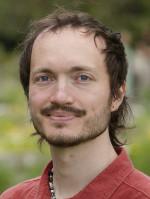
Research Associate
Hi, I’m Evan (he/him) and this is my bio page!
I started my PhD in the Zhang group in October 2019, studying extracellular electron transport in cyanobacteria: cyanobacteria are able to absorb sunlight, use that energy to power themselves (by carrying out photosynthesis), and then alse ‘secrete’ some of this energy into their environment, as electricity. The thing is, we currently don't understand either how or why cyanobacteria secrete this energy.
To answer these questions, I look at the interface between these cells and the electrodes we use them with to harvest electrons. I conduct microscopy with cyanobacteria, to study how the community of cells changes and the internal & external cell environments change throughout the process of extracellular electron transport. The underlying idea is that if we can better understand the mechanisms behind this process (what is shuttling electrons, how is this process distributed across the electrode) then we can intelligently improve applications of the process - biophotovoltaic devices which would produce solar electricity using predominantly biological systems. You can read about the state of the art of these devices in our recent review, or request a copy of my thesis. I finished my PhD in early 2024 and I am currently working as a Research Associate in the Zhang lab on these same questions.
I began my academic life with an MSci in Molecular & Cell Biology and Organic Chemistry at University College London, which I finished up in June 2017. The final year of this was spent studying the structural biology underlying a1-antitrypsin polymerisation with Dr James Irving, which involved a great deal of recombinant protein production, EPS spectroscopy and FRET analysis to determine how different parts of the protein shifted during the polymerisation event. Following this I spent two years outside of academia: the first as a private tutor and tutor/support staff at 6th form college, tutoring maths and science A Level; the second doing science communication at a genetic and rare disease charity, Genetic Alliance UK, while studying part-time for Postgraduate Certificate of Practical Science Communication at the Institute of Continued Education here in Cambridge.
I’ve always been interested in the public side of science, how we as scientists communicate our research, how different publics engage with and relate to science, who has a say in what science gets done and how it is used. I recognise science as inherently political, and think that scientist should approach their work with this in mind - for instance not accepting funding from fossil fuel companies to fund renewables research.
